
Disney’s new animated film Planes: Fire & Rescue, the sequel to last year’s Planes, brings the world of aerial wildfire fighting to the big screen, exploring the themes of second chances and rediscovering passion.
The film features returning Planes hero Dusty Crophopper, a crop duster turned world racing champion. Early in the story, Dusty encounters one of life’s inevitable curveballs that could mean the end of his racing career. Through a series of events he finds himself training to become a firefighter, igniting a new passion and shedding light on the world of everyday heroes who go in when others are running out.
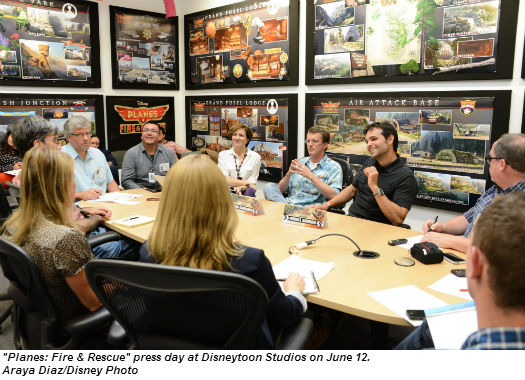
While the film is entertaining for all ages and has been well received by industry professionals who’ve screened it, the story of how the film came to be is perhaps more impressive.
Planes: Fire & Rescue began with an idea. While the first film was still in production, executive producer John Lasseter (of Cars and Toy Story fame) gave the green light for a sequel, directing the team to make Dusty a wildfire fighter as a way to honor the profession.
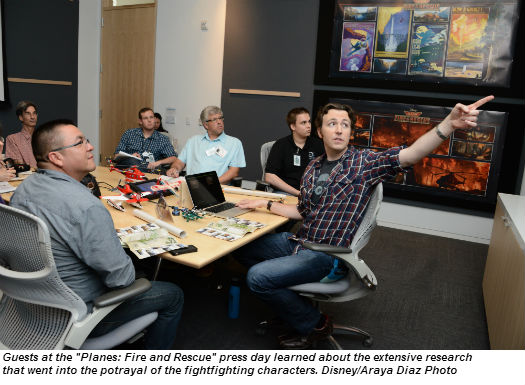
“John has a philosophy that the story is found in the subject, so we don’t start with a script. We start with research,” said Planes: Fire & Rescue co-writer Jeff Howard. “The truth is in the material. By researching the people and vehicles that do the job, we knew the story would reveal itself.”
And so it proved. Disney research crews visiting air attack stations and smoke jumper bases saw a pattern right away. Almost everything, from aircraft to support equipment, was second hand. Helicopters and airplanes had former lives — from cargo planes in Alaska to Hueys in Vietnam. Even the equipment and buildings were in many cases recycled, from former military hangars to an old vending machine now used as shelves in one base they visited.
“It was apparent pretty quickly that the story of the equipment used in the wildfire firefighting world is about second chances,” Howard said. “Everything seemed hand-me-down, except for the people. Those pilots and mechanics are some of the best in the world.”

A story was born. Dusty finds new life as a firefighting SEAT — single-engine air tanker. In fact, SEATs, were the first firefighting airplanes in the 1950s, repurposed from crop dusters. Dusty’s mechanic is exceptionally skilled, making things “better than new” with what he has on hand, much like maintenance crews in the field. And all the aircraft he meets had a former life.
Disney animators, writers and directors spent hours working with firefighters, smoke jumpers, pilots and mechanics, asking questions, listening to and recording radio communications, observing operations, and taking pictures and video.
One of the first places Disney visited when they began research four years ago was Cal Fire’s Hemet Ryan Air Attack base in Southern California. Hemet Ryan Battalion Chief Travis Alexander and his team answered countless questions and gave the team a tour. “As the day went on, it became apparent they came to us raw, with no real story already preconceived,” Alexander said. “That’s when we worked to really get them a look at what we do.”
Alexander arranged for the Disney team to attend Air Attack School. He also arranged for them to mount cameras in aircraft, on smokejumper helmets for jumps, and on the ground as pilots practiced air drops, in hopes of assuring accuracy in the final product.
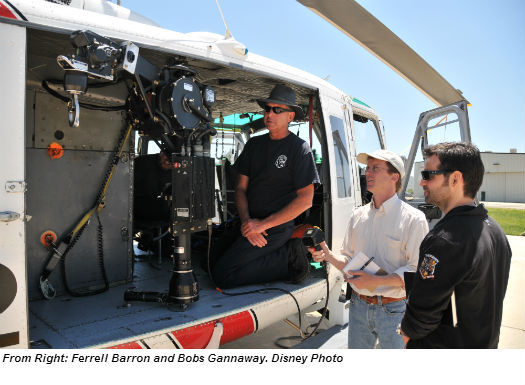
As the story took shape over the next four years, Disney shared sections of script, story boards, and clips of the film with firefighters, pilots and mechanics. At times, whole sections were redone based on the response.
“There were times when I had to do a lot of red lining and even though I was shooting a hole in what they’d just showed me, and all their work, they were very eager to go back and get it right,” Alexander said.
In addition to firefighting professionals, Disney reached out to Red Bull Chief Pilot Chuck Aaron for his insight on helicopter aerodynamics. Aaron gave the Disney team a full day of ground school on helicopter aerodynamics and consulted heavily with animators to assure accuracy.
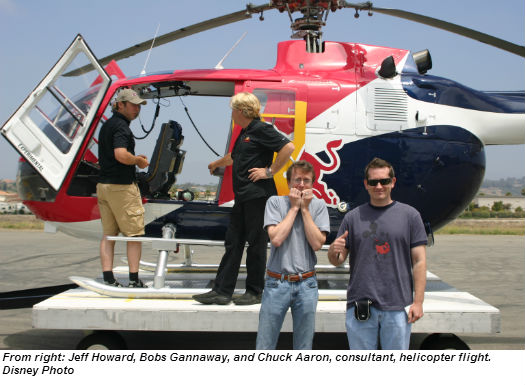
“What perhaps impressed me the most was the team’s dedication to getting it right,” said Aaron. “We’ve all seen terrible helicopter representation in Hollywood, but that’s not here. In the end, they did it. It really shows because they got it right — representing our industry. The sounds, maneuvers, flight scenes, radio communications, all of it. They got it all right.”
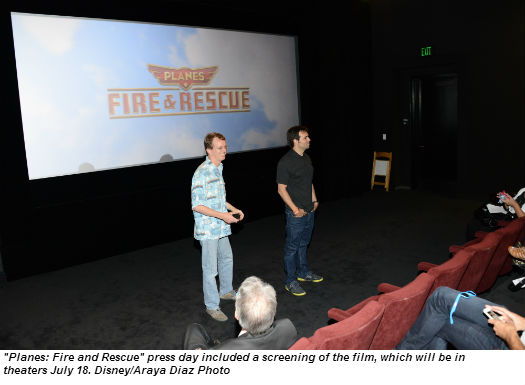
Disney’s Planes: Fire & Rescue (Rated PG) is in theaters July 18.









